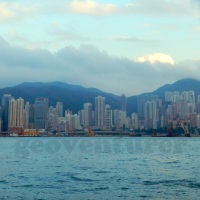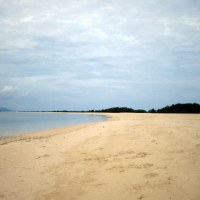Last year, I supervised international students on a fieldtrip to Yogyakarta (pronounced Jogja by Indonesian friends) to see geothermal manifestations and power plants. Of course, in any field trip, the cultural aspect of the place should not be missed (*wink wink*), so just before our afternoon return flight we visited two of Jogja’s most famous sites: Borobudur and Prambanan Temples.
Buddhist Borobudur Temple
Borobudur is a Buddhist temple northwest of Jogja. We drove for ~1.5 hours to get to the temple complex. We each paid 190 IDR (or the equivalent of 20 USD) to enter, and hired a local guide for ~10 USD.
The entrance fee included a free bottle of water, and the use of a batik cloth to wrap around the waist.
We were told this is a marketing strategy to introduce the batik to tourists, which was selected as a UNESCO World Heritage in 2009.
The guide explained that Borobudur was constructed in the 9th century when Buddhism and Hinduism were still the dominant religion in the area. The temple was buried due to several volcanic eruptions and lay abandoned for several hundred years before its rediscovery by the British in the 19th century. It was unearthed and painstakingly restored to the incredible structure that it was intended to be.
There was a recommended way to explore the temple: enter from the east and walk clockwise until the top. We were with a guide, so we did it the “proper” way.
My attention was piqued by the hundreds of relief panels covering the walls of the temple. The guide explained that the panels at the bottom portions depicted the concept of karma, while the panels on the higher levels of the temple illustrated narratives from Buddha’s life before he reached enlightenment, as well as his lives as reincarnations of different animals.
It was interesting to learn a little bit more about Buddhism through the stories in the panels. I noticed quite a number of smaller Buddha statues on the walls and roofs, but about half of them are already headless. The guide said the Buddha heads were looted in the past to sell to willing buyers.
We climbed the steep stairs to reach the famous stupas. The picturesque scene of the stupas overlooking Central Java’s greenery is the typical “postcard photo” of Borobudur, and the view in person is even more beautiful.
The picturesque scene of the stupas overlooking Central Java’s greenery is the typical “postcard photo” of Borobudur, and the view in person is even more beautiful.
 We learned that there’s supposed to be a Buddha statue inside every stupa, but several statues are missing because of theft across the centuries. A few of the stupas were half-opened to reveal the Buddha statues inside.
We learned that there’s supposed to be a Buddha statue inside every stupa, but several statues are missing because of theft across the centuries. A few of the stupas were half-opened to reveal the Buddha statues inside.

After spending some time enjoying the majestic view, it was already time to go. I felt really privileged to visit Borobudur and learn of its story throughout the centuries. The grandeur of Borobudur is even made more majestic by the colorful history behind it.
The Hindu temple of Prambanan
We drove back to Jogja, where Prambanan temple is located. The entrance fee is 18 USD (Rupiah charge depends on the exchange rate), but this time we did not get a guide since we were accompanied by Jogja locals familiar with the temple. We wrapped the mandatory batik around the waist and entered the large compound. The temple complex look mystical from afar with the building’s towering spires set against the backdrop of the blue sky.
Prambanan is a Hindu temple complex built in honor of the Hindu god Shiva (the Destroyer). It had the same fate as Borobudur, built at around the same time, abandoned because of natural disasters, and rediscovered by the British in the 19th century.
Unlike the single structure of Borobudur, Prambanan consists of several buildings characterized by tall spires.
There were originally 240 buildings, but most of the minor structures are now in ruins. The six major structures thankfully managed to remain intact.
The biggest building is a temple for Shiva, so we visited that first. Due to the 2006 earthquake the Shiva temple is categorized as “relatively stable”, which means we had to wear hard hats to enter in case of falling debris.
Several parts of the building still reveal the damage caused by the earthquake, but I think they did a decent job with the renovation work.
The Shiva temple also have relief panels like Borobudur, but this time the panels illustrate the story of the Ramayana, which incidentally is being played almost every night at the nearby amphitheater.
In the center of the temple was a statue of Shiva. I couldn’t help but notice that there was only one statue of the main deity here in Prambanan as opposed to the abundance of Buddha statues in Borobudur.
We also visited the smaller but similar-looking buildings on either side of the Shiva temple. These two structures are dedicated to Brahma (Creator) and Vishnu (Keeper), and each deity had their statues in each temple.
There were three even smaller buildings in front of the gods’ temples. The smaller structures house the favored vehicle of each deity: bull (Nandi) for Shiva, swan (Angsa) for Brahma, and the kite (Garuda) for Vishnu.
Outside of the six major structures, a lot of the minor temples are now mostly in ruins.
Nevertheless, what remains of the Prambanan temple complex is still worth a visit. I left Prambanan wishing that it can survive future earthquakes and volcanic eruptions so more people can appreciate its beauty.
I find it very interesting that Borobudur and Prambanan were built almost at the same time and they share similar stories and fate, even though they were built for different religions. It is also fascinating that two major temples of Buddhism and Hinduism are located relatively close to each other, given that Indonesia’s current dominant religion is Islam. The Borobudur and Prambanan temples are truly a testament to the rich heritage of Indonesia.























